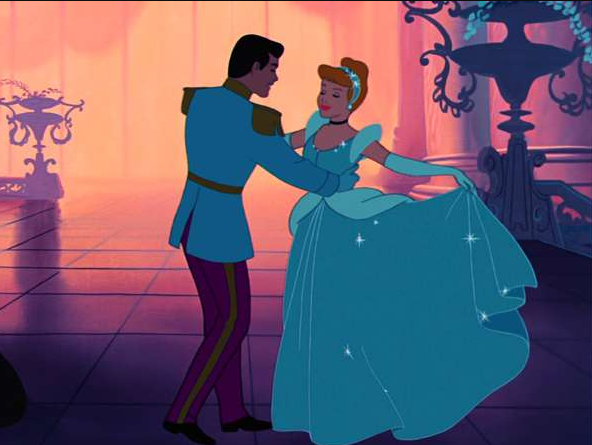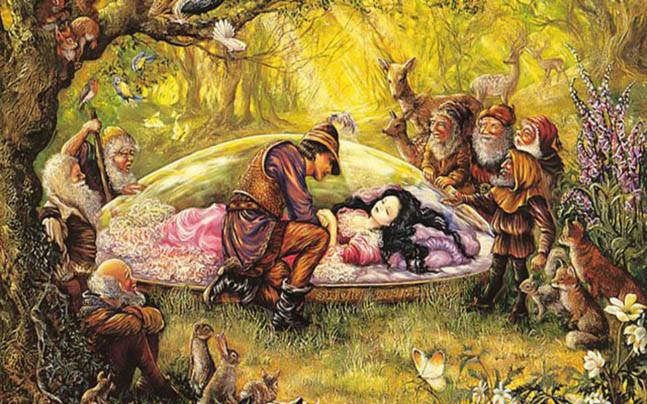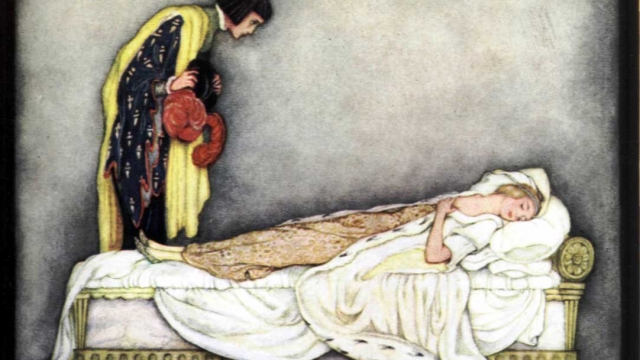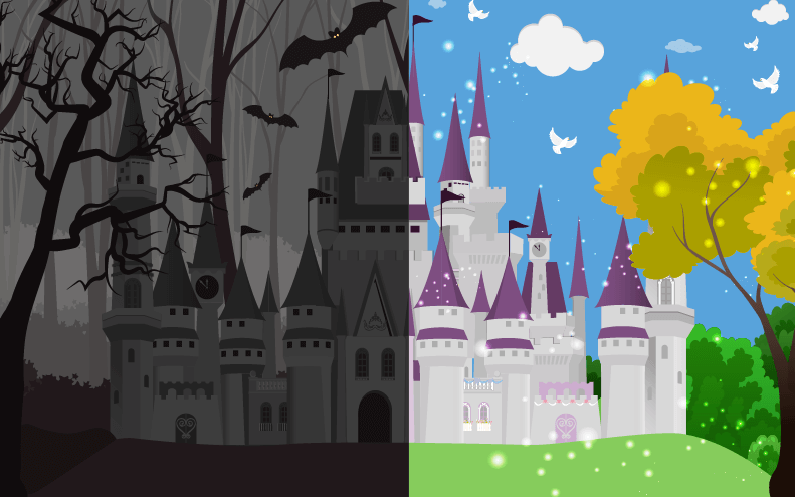By Rania Tsoli,
As children, our first contact with art, books, and the whimsical side of our world is usually a result of a beloved person telling us a fairy tale. Asking to be told a story before bed, and laughing at the adventures of our favorite fairy tale heroes and heroines, while drifting off to sleep is a big and loved part of almost everyone’s childhood. As we grow up, we naturally continue to associate fairy tales with children’s bedtimes stories, full of pretty princesses and noble princes, villains that are always comically defeated, and happy endings that fill our hearts with love and triumph.
However, their original intents and purposes were actually quite different, and many of the most popular fairy tales as we know them might differ a bit from their original, darker versions. In order to understand why many of the original fairy tales are so much darker and violent, it is important to understand what the true purpose of a fairy tale was back when it was created.
In their original form, fairy tales were what we would call “morality tales”. They were meant to teach a lesson and had one main goal: to promote the ideas that evil, greed, lust, and vanity ultimately lead to bad ends. Many of them had some pretty violent details and not-so-happy-endings, both of which were considered of help, in order to reinforce the stories’ moral points to their readers and listeners. Now, most – if not all – of the most popular fairy tales have been adapted to films and series, with Disney proudly claiming the first place as the most famous and successful company, when it comes to animating and bringing classic fairy tales to our screens.

While some level of morality and story-with-a-purpose still exists in the Disney version of the fairy tales, their original, darker material has been almost completely watered down, or in a few cases removed altogether. With these facts in mind, let us take a look at the fascinating differences between a few of the older versions of our favorite fairy tales and the ones most of us grew up with, whether it was a newer written version or a popular animated adaptation.
Snow White is the first story that we are going to have a look at, and it is especially notable, since it launched the modern trend of “sanitized” fairy tales. While Walt Disney kept many of the details of the original story by the Grimm brothers, he did omit some grislier ones. In the original fairy tale, Snow White has a stepmother, who is the epitome of vanity and evil. She has a magic mirror that assures her of her beauty, until the day it tells her that Snow White has taken her place. Blinded with jealousy, the Queen has a huntsman take Snow White into the woods to kill her and bring back her liver and lungs, but he takes pity on her, lets her go and instead brings back the requested parts of a wild boar. The Queen then cooks and eats the parts, thinking they are Snow White’s. Snow White finds safety at the cottage of the seven dwarfs, but that does not last for long, since the magic mirror lets the Queen know that she still lives.
She then disguises herself and attempts to kill Snow White three times, but the young woman survives the first two, thanks to the dwarfs that find her and save her. The third attempt, which includes the infamous poisoned apple, seems to have killed Snow White, as the dwarfs cannot revive her. They build a glass coffin for her and when they pick it up, the piece of poisoned apple in Snow White’s throat falls out. After she wakes up, she falls in love with the prince who is passing by and they plan to get married, inviting the Evil Queen to the wedding. But do not be fooled; the invitation is a trap. When the Queen arrives, she is given a pair of iron shoes that have been heated on burning coals. She is forced to dance in the scalding shoes, until she falls over dead.

The fairy tale of Cinderella that Disney tells through the popular animated film depicts a young woman who has been enslaved by her evil stepmother, but gets a chance at happiness when her fairy godmother intervenes. The godmother transforms Cinderella’s ragged attire into an elegant gown, so that she can attend a royal ball and meet Prince Charming. This, however, only lasts until midnight, when she flees, leaving behind one of her glass slippers, which the prince finds and takes, before going to look for her. The two evil stepsisters try on the slipper, but their feet are too big. The shoe is just right for Cinderella, and she marries the handsome prince.
There are two previous Cinderella stories though, which are both grotesque, to say the least. In one of the versions, written in the 17th century, Cinderella kills her evil stepmother by slamming a lid of a chest on her throat, which breaks her neck. In the Grimms version, the stepsisters chop off their feet to fit the glass shoe. When this trickery is uncovered, the little birds that follow Cinderella around peck the evil stepsisters’ eyes out in order to avenge Cinderella and teach the stepsisters a lesson, punishing them for their deception.
We can all remember the tale of Sleeping Beauty: a young woman is pricked by a needle, and falls to sleep for eternity. However, in the original tale by Giambattista Basile, she does not wake up thanks to a prince’s kiss like she does in the modern adaptations and films. She is instead awakened by the nudging of her newborn twins. While unconscious, the princess is impregnated by a monarch – who conveniently forgets to mention that he is a married man – and wakes up to find out she is not only a rape victim, but also a mother of two. When the wife finds out, she rages in fury and not only tries to have the twins killed, cooked, and served to the King, but also tries to burn the princess alive. She is eventually thwarted by the king, and Sleeping Beauty gets to marry the guy who raped her in her sleep.

Finally, the version of the popular fairytale of the Little Mermaid that most of us are familiar with includes Ariel falling in love with Prince Eric after saving him from a shipwreck, turning into a human at the cost of her voice, meeting Prince Eric as a human, and, in the end, getting her voice back and marrying him, all of which leads to their own happily ever after. In Hans Christian Andersen’s version, the mermaid once again makes a deal with the evil sea witch to drink a potion in order to get legs at the cost of her voice to see the prince.
However, if she does not succeed at getting the prince to fall in love with her and marry her, she will be doomed to die. Besides this dark twist to the story, the price of having human legs was that every step she took caused excruciating amounts of pain, as if she was treading upon sharp knives, as the story tells. Towards the end, Ariel is told that she can be a mermaid again, if she kills the prince. She opts to instead commit suicide, not baring the thought of Prince Eric dying, and throws herself in the sea, letting her body dissolve into sea foam.
However dark and twisted, the original versions of the fairytales we all know and love are admittedly particularly interesting, with unexpected plotlines, gloomy details and gory artistic choices that are hard not to appreciate, especially as an adult. Truth be told though, no matter how much someone might like the original versions better, the chances of a young child seeing or hearing those instead of the newer ones and not being scarred for a certain time period are not many. While children need to be taught many life and morality lessons from a young age, one can always opt for a tamer option that can teach important values, while maintaining their optimism and love for life, and simultaneously inspiring them by exposing them to a different, whimsical world that is full of magic, love, and light, just like a child’s soul.
References
- Not For Kids: Shocking Original Endings to Some of Our Favorite Disney Fairy Tales, reeldown.com, Available here
- 8 Fairy Tales And Their Not-So-Happy Endings, mentalfloss.com, Available here
- These Disney Fairy Tales Will Be Ruined For You Forever Once You Know Their Dark Real Endings, scoopwhoop.com, Available here
- 10 Fairy Tales That Are Way Darker Than You Realized as a Kid, people.howstuffworks.com, Available here




